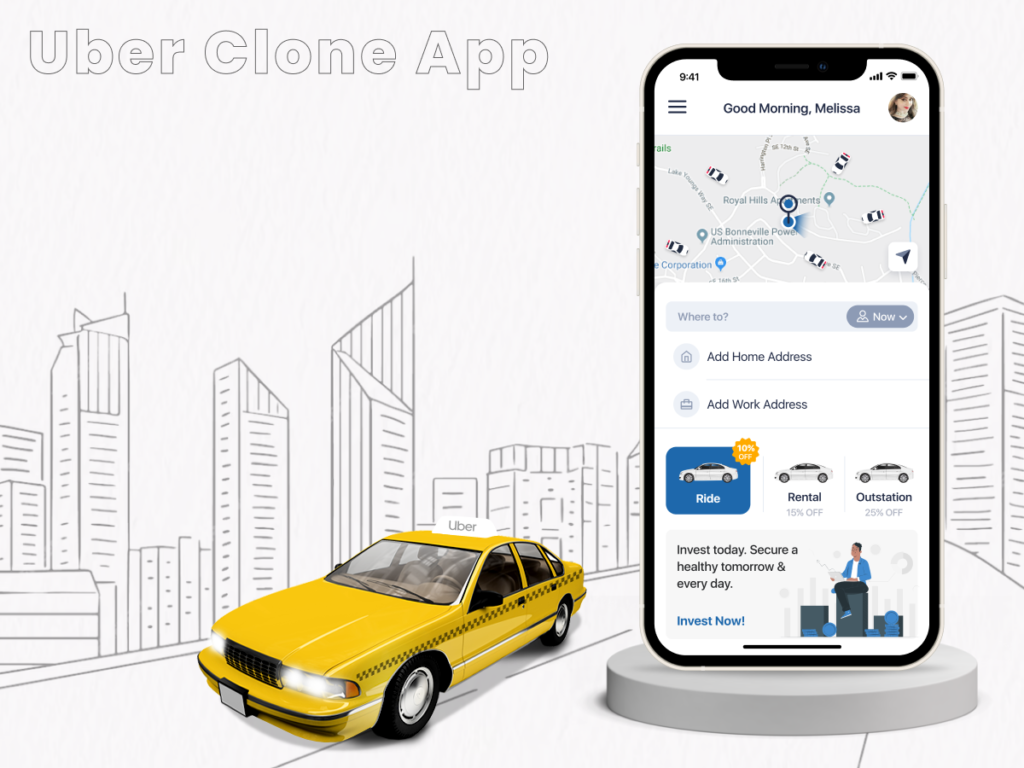The ride-sharing industry has seen phenomenal growth over the past decade, led by the likes of Uber and Lyft. As urban transportation continues to evolve, entrepreneurs and businesses are looking to replicate this success through Uber clone app development. Building an Uber-like platform can be a highly rewarding venture, but it requires careful planning, the right technology stack, and a clear understanding of market needs.
In this guide, we’ll explore the essential steps to create a robust Uber clone app, from choosing the right tech stack to development best practices that ensure performance, scalability, and user satisfaction.
Why Build an Uber Clone App?
An Uber clone app allows you to launch a ride-hailing service with similar core features as Uber, such as ride booking, driver-tracking, real-time GPS navigation, and payment integration. It saves you time and resources, as you don’t have to build the app from scratch.
Moreover, the ride-sharing model can be customized for different regions or niches—such as bike taxis, electric scooters, or even premium limo services. This flexibility makes uber clone app development highly appealing for startups and enterprises alike.
Key Components of an Uber Clone App
Before diving into the tech stack, it’s important to understand the three core components that make up an Uber-like app:
-
Passenger App
This allows users to request rides, view driver details, track trips, and make payments. -
Driver App
Enables drivers to accept ride requests, navigate using GPS, manage their schedules, and track earnings. -
Admin Panel
A web-based dashboard where administrators can monitor activity, manage users, analyze metrics, and handle disputes or promotions.
Each of these modules should be seamlessly integrated to ensure a smooth and reliable user experience.
Must-Have Features for Your Uber Clone
A successful Uber clone app should include the following essential features:
-
User registration & profile management
-
Real-time GPS tracking
-
Fare estimation
-
Multi-payment gateway integration
-
Rating & review system
-
Push notifications
-
In-app chat or call functionality
-
Trip history and invoice generation
-
Driver earnings and payout management
-
Advanced analytics in the admin panel
Optional advanced features like surge pricing, AI-based route optimization, or loyalty programs can be added later for a competitive edge.
Tech Stack for Uber Clone App Development
Choosing the right technology stack is critical for app performance, scalability, and maintainability. Here’s a recommended stack to build your Uber-like platform:
Frontend (Mobile App)
-
React Native or Flutter – Ideal for building cross-platform apps with native-like performance.
-
Swift (iOS) and Kotlin (Android) – If you prefer native app development.
Backend
-
Node.js or Python (Django/Flask) – Handles API requests and server-side logic efficiently.
-
Express.js – Commonly paired with Node.js for RESTful APIs.
Database
-
MongoDB or PostgreSQL – For storing user data, trip history, payments, etc.
-
Redis – For caching and session storage.
Geolocation & Mapping
-
Google Maps API – For real-time location tracking and route mapping.
-
Mapbox – An alternative with customizable maps.
Payment Gateway
-
Stripe, PayPal, Razorpay, or Braintree – Depending on your target region and supported currencies.
Cloud & Hosting
-
AWS, Google Cloud Platform, or Microsoft Azure – For scalable hosting.
-
Firebase – Useful for real-time notifications, crash analytics, and user authentication.
Real-Time Features
-
Socket.IO – For real-time ride status updates.
-
Firebase Cloud Messaging (FCM) or OneSignal – For push notifications.
This tech stack supports scalability and smooth performance even during peak load times, which is vital for a ride-sharing app.
Development Tips for a Successful Uber Clone App
1. Start with MVP (Minimum Viable Product)
Begin with a version of the app that includes only core functionalities. This allows you to launch faster, collect user feedback, and iterate based on real-world usage.
2. Focus on UX/UI Design
A clean, intuitive interface for both passengers and drivers can significantly improve user retention. Ensure seamless navigation, minimal taps for booking, and responsive design across devices.
3. Prioritize Data Security
Since the app handles personal and financial data, use SSL encryption, secure authentication, and proper data storage practices. Ensure GDPR compliance if you operate in Europe.
4. Test Extensively
Functional, performance, security, and usability testing must be carried out before launch. Automated testing frameworks like Jest (for JavaScript) and Appium (for mobile) can help speed up the process.
5. Use Scalable Architecture
Microservices architecture allows your app to scale modules independently, such as payments, notifications, or GPS tracking. This reduces downtime and simplifies updates.
How it Compares to Other Models
Interestingly, the Uber clone model shares many foundational elements with a Turo clone app, particularly in the areas of booking, payments, and user verification. The key difference lies in asset usage: Uber clones use shared driver-owned vehicles, while Turo clones focus on peer-to-peer car rentals. However, the core technologies like mapping, user profiles, and real-time updates are remarkably similar, making cross-industry adaptations possible.
Cost Estimation for Uber Clone App Development
The cost to build an Uber clone app varies depending on your feature set, region, and whether you’re building in-house or hiring a development partner. Here’s a rough breakdown:
-
Basic MVP: $15,000 – $30,000
-
Full-featured app: $40,000 – $100,000+
-
Monthly Maintenance: 15–20% of development cost
Outsourcing to a reputable software development company can also streamline the process, giving you access to dedicated developers, designers, and QA testers.
Conclusion
Building a successful ride-sharing platform like Uber involves more than just copying an existing model—it requires strategic planning, innovative thinking, and technical excellence. Whether you’re launching in a niche market or aiming for regional dominance, uber clone app development provides a powerful foundation for entering the competitive mobility industry.
By selecting the right tech stack, focusing on user experience, and adopting scalable practices, you can set your app up for long-term success. Stay agile, gather user feedback continuously, and never stop innovating.
If you’re considering launching a ride-sharing app, now is a great time to start. With the right approach and tech team, your Uber clone could be the next big disruptor in the mobility landscape.



